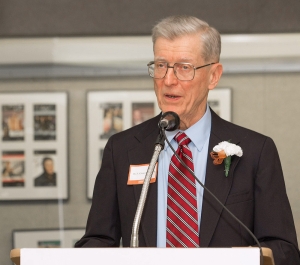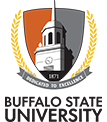
F. Christopher Tahk Conservation Science Labs
In the conservation science laboratories, students have access to the wide range of analytical and chemical instrumentation and tools employed by conservators to study artists' materials, as well as historic and new materials for conservation.
Facilities include a wet chemistry laboratory, a microscopy room, and two analytical laboratories.
The analytical equipment includes a gas chromatograph mass spectrometer with pyrolysis accessory (Pyr-GCMS), an FTIR and a micro-Raman spectrophotometers, a DSC instrument, an ultraviolet-visible spectrophotometer (with both reflectance and transmittance capabilities), a colorimeter, two ESPEC environmental aging chambers, a Q-Sun light aging chamber, two XRF instruments - an Bruker handheld and an ARTAX, a Nanofocus spinning disc confocal microscope and several other instruments.
The microscopy facilities include a Zeiss Universal microscope, an Olympus polarizing microscope, and a Leica fluorescence microscope (all microscopes have photomicrographic and video capability). Additional analytical instrumentation, including an ICP optical emission spectrometer, scanning electron microscopes, Auger and X-ray Photoemission spectrometers, 300 and 400 MHz nuclear magnetic resonance spectrometers, and mass spectrometers, are available in other departments at Buffalo State and at the north and south campuses of the University at Buffalo.
The wet chemistry laboratory is fully equipped for spot testing and microchemical analysis of artists' materials, and it also contains a full metallographic sample preparation facility. The wet chemistry lab serves the objects and paper conservation facilities by providing them with the equipment and laboratory space required to carry out ion-selective electrode analyses, pH measurements, and conductivity measurements. The Conservation Department is also outfitted with scientific instrumentation for organic and inorganic analysis, thereby allowing the identification of paint media, pigments, alloy assay, fibers, and photographic processes. Equipment for forensic imaging of artwork by X-ray, ultraviolet, and infrared techniques is also available.

F. Christopher Tahk
F. Christopher Tahk was a 1975 alumnus of the Cooperstown Graduate Program in the Conservation of Historic and Artistic Works at SUNY Oneonta. Tahk served as an art conservation faculty member and director of the program from 1983 to 2004, in which he oversaw its transition to Buffalo State in 1987.
He was named a SUNY Distinguished Service Professor in 1997 and he received two awards from the American Institute for Conservation of Historic and Artistic Works: the Conservation Advocacy Award (2004) and the Sheldon and Caroline Keck Award (1997). Upon his retirement in 2004, he established an endowed fellowship in his name.

